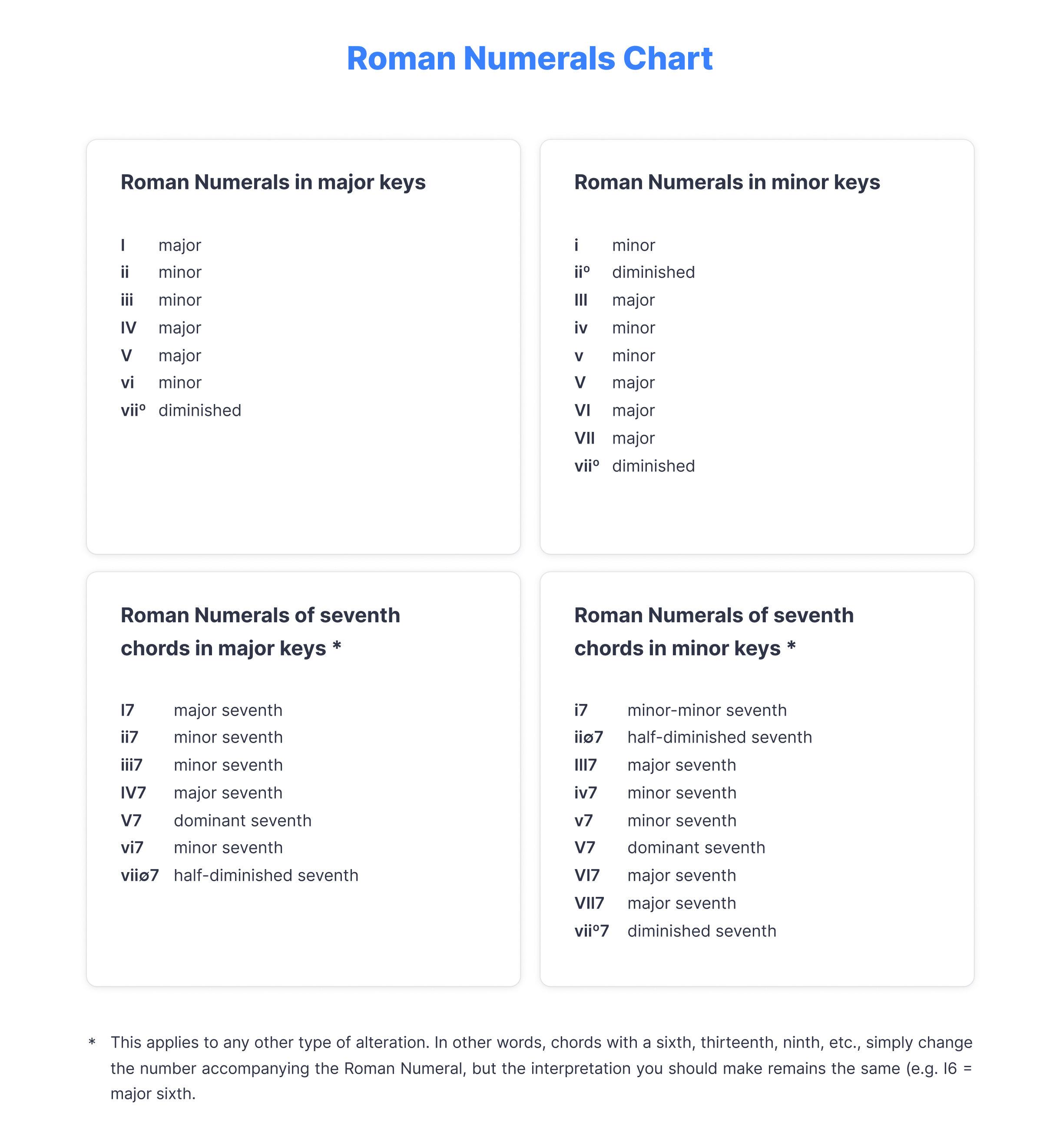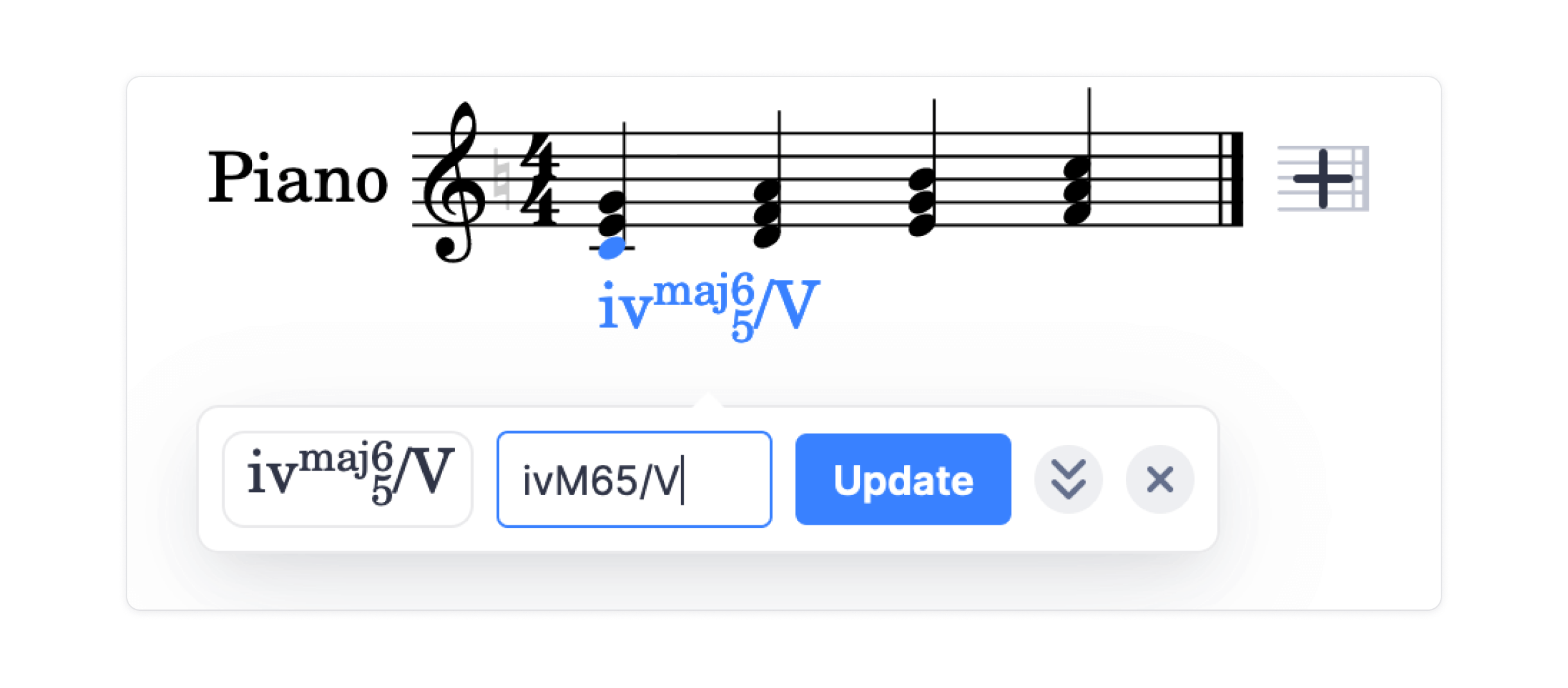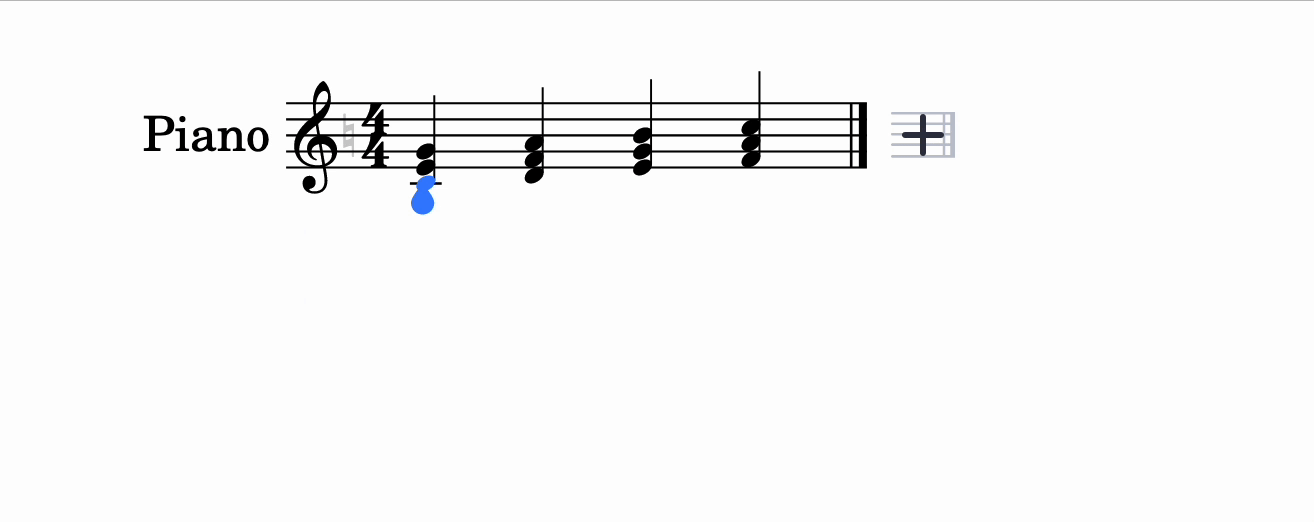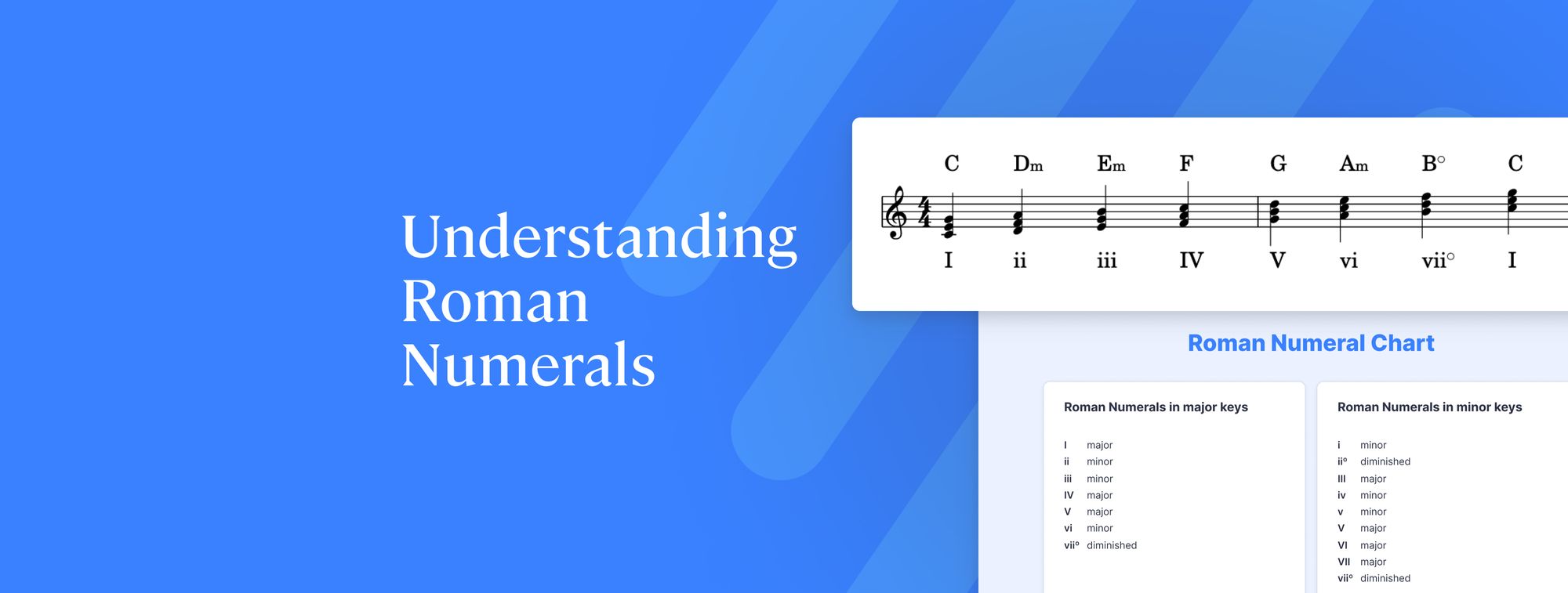Music theory can sometimes feel overwhelming, but don't worry – there are tools to help you make sense of it all. When it comes to chords and harmony, one cool trick is the use of Roman numerals, which really do make things easier to grasp. And best of all, it isn't just about making music less confusing; it's about ensuring that learning stays fun and exciting.
🔥 If you're wanting a handy guide to navigate the world of chords, good news – Roman numerals are that guide! These little symbols help you figure out the scale degree of a chord's root, indicate its quality, and also show if there are any extra bits or flips to notice.
In this article, we'll explain what Roman numerals are, what they mean on a music sheet, share some charts, and show how to use this feature in Flat's music notation software.
What are Roman numerals in music?
Roman numerals are symbols taken from the Latin alphabet that stand for certain numerical values. For music notation, the basic ones to take into account are:
- I or i = 1
- II or ii = 2
- III or iii = 3
- IV or iv = 4
- V or v = 5
- VI or vi = 6
- VII or vii = 7
✨ You'll soon understand the importance of having the flexibility to write Roman numerals in either uppercase or lowercase.
In music theory, Roman numerals are used as a notation system for identifying chords within the framework of key signatures. They specify the scale degree of the chord's root, indicate the chord's quality, and highlight any extensions or inversions within the chord. In simple terms, Roman numerals provide you with all the information you need to understand the chords in a musical score: their qualities, inversions, and the relationship they have with other chords and the song's key.

Why do we use Roman numerals in music?
This system is commonly used because it enables a consistent representation of information across major and minor key signatures, simplifying the analysis and understanding of music.
💡 Learn how to use this feature in Flat here.

How do Roman numerals work in music?
Roman numerals in music tell us three important things: where a chord starts in the scale, what type of chord it is (major or minor), and if the chord has any alterations.
1. Roman Numerals tell us where a chord starts in the scale.
No matter what key the music is in, the Roman numeral shows where the chord starts in the scale.
Let's take a step back and remember that the scale has 7 degrees (since the eighth is the same note as the first, but an octave higher). Let's also recall that in terms of harmony, each key has a corresponding chord progression. Thus the Roman numeral will indicate the chord in relation to the scale you are working with.
An example is usually is the easiest way to understand this. Let's work with the C major scale.
The C major scale has the following notes:
C - D - E - F - G - A - B
The chord progression for this scale is:
Cmaj Dm Em Fmaj Gmaj Am Bᵒ
This chord sequence indicates that Cmaj is chord number 1; in Roman numerals, Cmaj is I in the C major scale.
Dm, being the second chord in this sequence, is going to be number 2. But wait! It's a minor chord. This is where the possibility of having both uppercase and lowercase Roman numerals comes in.
💡 If you aren't familiar with the chord progressions associated with certain keys, check out this article:

2. Roman numerals tell us the type of chord (major or minor).
When discussing Roman numerals, uppercase numbers signify major chords, while lowercase numerals signify minor chords. Therefore, Dm is the second chord, i.e., 2; since it's a minor chord, we write it in Roman numerals as ii. Here are the Roman numerals for the chords of the C major scale:
- Cmaj = I
- Dm = ii
- Em = iii
- Fmaj = IV
- Gmaj = V
- Am = vi
- Bᵒ = vii
Clear so far? Please go back over the above as many times as needed to fully grasp it.
- Roman numerals can indicate if the chord has any alterations.
In addition to the Roman numeral, we may encounter other symbols providing valuable information about the chord:
- A little ᵒ at the top (like viiᵒ) indicates a diminished chord.
- A little ∅ (like vii∅), signals a semi-diminished chord.
- A + sign (like V+), shows an augmented chord.
You may also find the Roman numeral accompanied by a little number, indicating the addition of an extra note. For instance, if you see a little 7 along with a V (V7), it means you are adding the 7th to the chord. Keep in mind that these Roman numerals usually go beneath the music notes.
💡 By the way, here you can find a great article to understand augmented chords and how to incorporate them in your compositions:

Roman numerals chart
Now that you have all the guidelines to understand how to interpret Roman numerals in musical notation, here's a chart that you can refer to whenever you have any questions on the topic or just want to refresh the knowledge you've learned today.

You can download this chart here 👇🏼
Using Roman numerals in Flat
The option to add Roman numerals into your scores in Flat has been possible for a while now, but we have some exciting improvements for you.
💡Below you can find a step-by-step tutorial on how to use this feature 👇🏼

The fresh news today is that we've added a new way of inputting Roman numerals that is purely text-based, a change that many of you asked for.
Following user feedback regarding our new jazz chord systems, we saw the need for a text-based input to facilitate faster workflows. The objective is to help you input multiple Roman numerals and/or jazz chords efficiently, minimizing the time required.

The system now displays the Roman numerals it reads from your score to the left of the text input.

And of course you can always change back to the step-by-system system if you prefer or if needed for pedagogical purposes.
We hope that this change will help you be more productive on your scores – and yes, we intend to roll out a similar update for the jazz chords input soon!

